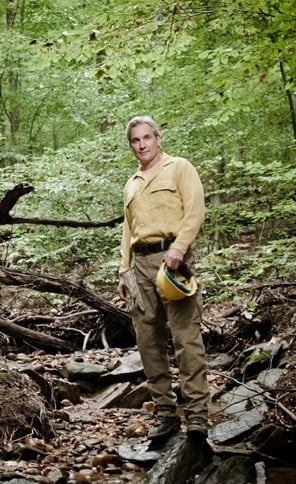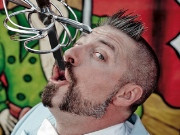
As told to Michael Gaynor
In 1996, I started spending two weeks of my summer vacation each year in Boise. I got hooked in with some fire crews out there. It’s a wonderful place to take pictures—you get in these situations where it’s really otherworldly in terms of the light and the color. I was trying to capture that in the faces of the firefighters.
The first few years, I would go and get nothing. It would be a slow fire season, or there wouldn’t be any fires at all. I would feel bummed out, full of self-doubt over this project that I was doing only for myself.
My first big one came on the 10th or 11th day of a two-week trip. The trip was almost over, and I hadn’t gotten anything. But that afternoon there were hot, dry winds out of Idaho. Right there in the Boise foothills, I started to see smoke.
The fire was started by somebody shooting tracer rounds at a gun range. One must have ricocheted into the dry grass just as conditions were right, and it took off.
When we got to the fire, it was only two acres wide, and with five or six engines there, it was almost out. But the radio was reporting that a thunderstorm was coming in. Fifty-mile-an-hour winds. And like the perfect storm, the part of the fire that hadn’t gone out yet was at the base of a hill where there was some bigger vegetation.
Just at that moment came the wind. The flames shot right up the hillside, and it was gone. By evening, the fire covered more than 15,000 acres.
Within the first hour, I was with the crew trying to tie the fire off before it could reach some nearby homes. This being my first big fire, my head was on a swivel, trying to get really nice pictures but also being aware of the danger around me. All of a sudden, we hear a warning on the radio that the wind is shifting. We look up and a column of smoke is coming over on top of us. That meant the flames were blowing back toward us. Somebody shouted again over the radio: “You guys gotta get out of there! And get that photographer out, too!”
I bolted. My escape was over a barbed-wire fence, down into a ditch full of brush, and across a big field of dry vegetation. I made it across the field to a paved road where our lookout was. I turned around and realized I must have gone pretty fast because I could still see another guy running. Within a minute after he made it across, that field was on fire. That’s when you realize that dry vegetation is nothing more than gasoline that hasn’t been lit yet
Eventually, the weather conditions changed and some cooler air came in to slow the fire down. It burned up a couple homes, but the firefighters got a handle on it.
Firefighters say there’s something called being bit by the fire bug. You’re drawn back every fire season. And I think I’ve got that, for what it offers me photographically.
Why do I do this? Because the men and women who fight these fires, a lot of whom are only college students, see some of the most dramatic moments of their lives. And there’s no one to take pictures of that.
National Geographic staff photographer Mark Thiessen has shot features on Russian smoke-jumpers and wildfires in California, among many other subjects.
This article appears in the November 2011 issue of The Washingtonian.


















